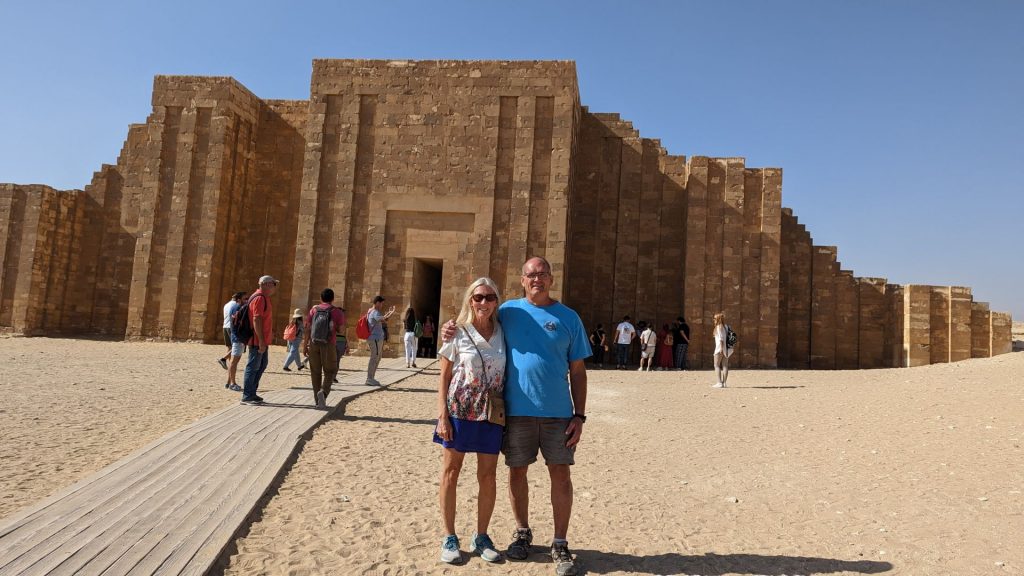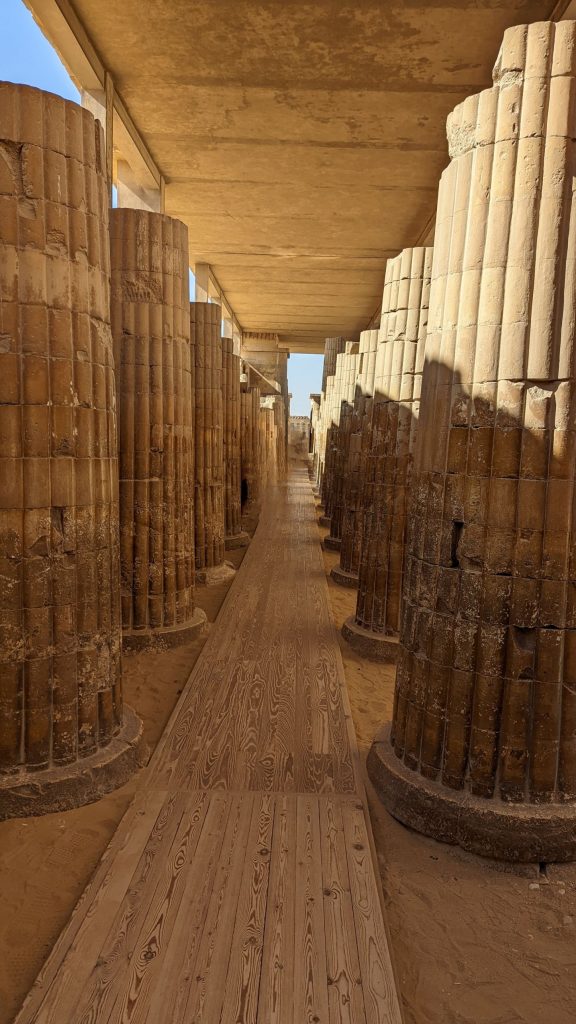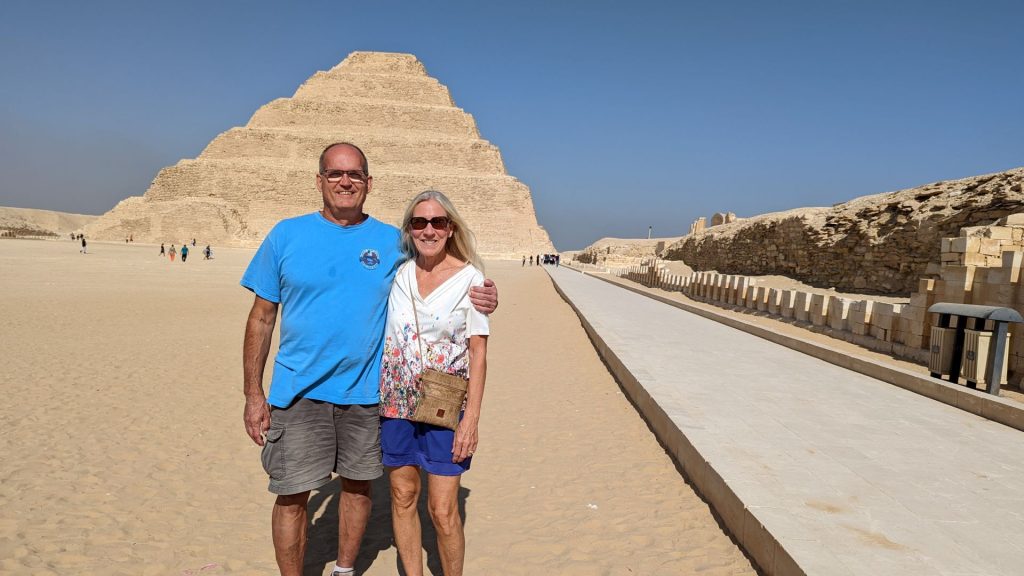This is part three of the Dec. 2 post. Part 1 was dedicated to the Egyptian Museum, part 2 to the pyramids and Great Sphinx of Giza and the Nile River dinner cruise. This post contains information about our visits to Saqqara and Memphis on Dec. 1.
Saqqara contains the oldest complete stone building complex known in history, the Pyramid of Djoser, built early in the Third Dynasty, during the reign of King Netjerykhet, more well-known as Djoser. According to egymonuments.gov.eg, before Djoser’s reign, royal and elite Egyptians were buried in mastabas, a type of funerary structure generally rectangular in shape and built over the tomb proper, which was underground. In contrast, the Step Pyramid is composed of six stacked mastabas, thus creating the step effect. The complex was a landmark achievement for Egyptian architecture. It was the first instance of the mass use of limestone in construction. According to the same source referenced above, Imhotep, its architect, may have been responsible for this major innovation.
There are two large open courts, one on each side of the pyramid. The king held a festival, the Heb-sed Festival, in the south court. The Heb-sed (or just Sed) festival was an ancient Egyptian royal ceremony that celebrates the rule of and rejuvenated the king and regenerated his power. The festivals were celebrated after a ruler had held the throne for 30 years and then every three to four years after that. They kept the king strong and allowed him to rule effectively and claim control over all of Egypt. Its presence in the funerary complex also allowed Djoser to continue to benefit from the ritual in the afterlife. Handy.
The complex is surrounded by a limestone wall over 10 meters high. The wall had numerous false doors which were carved into it after it was built. The single entrance to the enclosure is on the eastern side of the wall through the one doorway that is real. This leads to the entrance colonnade, which has 20 pairs of columns. There are 24 small chambers between the columns that are thought to have housed statues of the King or deities.

















